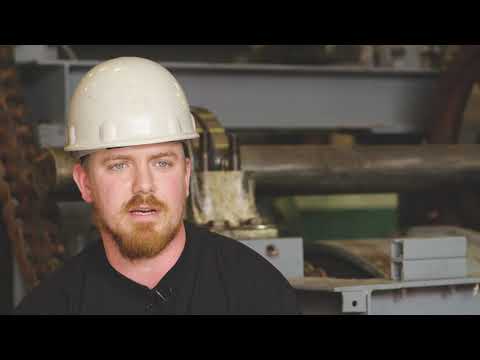Explore the Lucrative World of Millwrights: Job Description and Salary!

Millwright Job Description Template
Millwright Job Description A millwright is a skilled tradesperson who specializes in the installation, maintenance, and repair of machinery and equipment in various industrial settings. They are responsible for ensuring that all machinery operates efficiently and safely to meet production goals. One of the key responsibilities of a millwright is the installation of new machinery. They carefully study blueprints and technical manuals to understand the specifications and assembly requirements of the equipment. They then use a variety of tools and equipment to assemble and align the machinery, ensuring that it operates smoothly and precisely. In addition to installation, millwrights are also responsible for ongoing maintenance and repair of machinery. They regularly inspect equipment, perform routine maintenance tasks, and troubleshoot any issues that arise. This may involve disassembling and reassembling parts, replacing worn-out components, or adjusting settings to optimize performance. Safety is a paramount concern for millwrights, as they often work with heavy machinery and equipment. They follow strict safety protocols and procedures to prevent accidents and injuries. They also ensure that all machinery meets safety standards and regulations. Effective communication and teamwork are essential qualities for millwrights. They often collaborate with engineers, production managers, and other tradespeople to coordinate projects and resolve issues. In conclusion, millwrights play a crucial role in maintaining and optimizing machinery in industrial settings. Their expertise in installation, maintenance, and repair ensures the smooth and efficient operation of equipment, contributing to the overall success of the organization.Millwright Responsibilities
Millwright Requirements
How Much Does A Millwright Make?
Millwright Salary
| Country | Salary Range |
|---|---|
| United States | $45,000 – $85,000 |
| Canada | $50,000 – $90,000 |
| Australia | $55,000 – $95,000 |
| Germany | €40,000 – €70,000 |
| United Kingdom | £35,000 – £65,000 |
A millwright is a skilled tradesperson who installs, maintains, and repairs industrial machinery and equipment. They work in various industries such as manufacturing, construction, and power generation. Millwrights ensure that machines operate efficiently and safely, minimizing downtime and maximizing productivity. The salary of a millwright varies depending on factors such as experience, location, and industry. In the United States, the salary range for millwrights is typically between $45,000 and $85,000 per year. In Canada, it ranges from $50,000 to $90,000, while in Australia it is between $55,000 and $95,000. In Germany, millwrights can expect to earn around €40,000 to €70,000 per year, and in the United Kingdom, the salary range is £35,000 to £65,000. It is important to note that these salary ranges are approximate and can vary based on individual circumstances. Factors such as additional certifications, specialization, and overtime can also impact a millwright’s salary. Overall, millwrights are well-compensated for their skills and expertise in maintaining and repairing industrial machinery.
Millwright Salaries by Country
Top Paying Countries for Millwright
| Country | Average Salary (USD) |
|---|---|
| Switzerland | 80,000 |
| Australia | 70,000 |
| United States | 65,000 |
| Canada | 60,000 |
| Norway | 55,000 |
A millwright is a skilled tradesperson who installs, maintains, and repairs machinery in various industries. The salaries of millwrights can vary significantly depending on the country they work in. According to the data above, Switzerland offers the highest average salary for millwrights, followed by Australia, the United States, Canada, and Norway.
These countries provide attractive compensation packages to millwrights due to their strong economies and high demand for skilled workers in industrial sectors. Millwrights in these countries can expect competitive salaries that reflect their expertise and contribution to the workforce.
It’s worth noting that salary figures may vary based on factors such as experience, qualifications, and the specific industry in which a millwright works. Additionally, the cost of living and economic conditions in each country can also impact the actual purchasing power of millwright salaries.
Overall, millwrights in the top paying countries listed above can enjoy rewarding career opportunities and a higher standard of living due to their competitive salaries.
A video on the topic Millwright
Video Source : Georgia Construction CareersInterview Questions for Millwright
1. What is a millwright?
A millwright is a skilled tradesperson who installs, dismantles, repairs, reassembles, and moves machinery in various industries such as manufacturing, construction, and power generation.
2. What are the responsibilities of a millwright?
A millwright is responsible for reading and interpreting technical blueprints, setting up and aligning machinery, performing preventive maintenance, troubleshooting and repairing mechanical equipment, and ensuring that all machinery operates efficiently.
3. What skills are needed to be a successful millwright?
Successful millwrights possess strong mechanical aptitude, excellent problem-solving skills, ability to work with hand and power tools, knowledge of welding and fabrication techniques, understanding of electrical and hydraulic systems, and good physical stamina.
4. How do you ensure safety while working as a millwright?
I prioritize safety by following all safety procedures and wearing appropriate personal protective equipment (PPE). I also regularly inspect machinery for potential hazards, communicate effectively with colleagues regarding safety concerns, and participate in safety training programs.
5. Can you describe a challenging project you worked on as a millwright?
One challenging project I worked on involved the installation of a large conveyor system in a manufacturing facility. It required precise measurements, heavy lifting, and complex assembly. Despite the difficulties, I successfully completed the project on time and within budget.
6. How do you stay updated with the latest industry trends and technologies?
I stay updated by attending workshops, seminars, and industry conferences. I also read trade publications, follow industry-related websites and forums, and actively participate in professional networks to learn from others and stay informed about the latest advancements in the field.
7. How do you handle tight deadlines and high-pressure situations?
When faced with tight deadlines and high-pressure situations, I prioritize tasks, create a detailed plan, and communicate effectively with team members to ensure everyone is on the same page. I remain focused, organized, and adaptable, and I am not afraid to ask for help when needed.
8. What measures do you take to ensure the quality of your work as a millwright?
To ensure the quality of my work, I meticulously follow all relevant specifications and standards. I conduct thorough inspections, perform regular maintenance, troubleshoot any issues promptly, and seek feedback from supervisors and colleagues to continuously improve my skills and workmanship.
9. Can you describe a time when you had to collaborate with other tradespeople on a project?
Yes, in a construction project, I had to collaborate with electricians, plumbers, and carpenters. We worked together to ensure that all machinery and systems were properly integrated. Effective communication, coordination, and mutual respect were crucial to the success of the project.
10. How do you handle unexpected changes or setbacks in a project?
When faced with unexpected changes or setbacks, I remain calm and adaptable. I assess the situation, identify alternative solutions, and communicate with relevant stakeholders to find the best way forward. I understand that setbacks are inevitable in any project and use them as opportunities for learning and growth.






